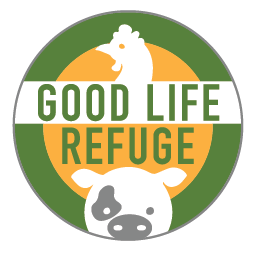Slaughterhouses: dangerous for animals and humans alike
September 8th, 2020 by Cindy Gordon
Slaughterhouses: dangerous for animals and humans alike
Not only is the world of factory farming and slaughterhouses cruel and inhumane for animals, it is a disaster for the health of humans consuming meat, as well as a major contributor to environmental destruction. Although not often taken into consideration, the reality of those forced to work in these harsh environments are the most vulnerable members of our society -- often immigrants and refugees(1) -- who have no choice but to do jobs that put their physical and psychological health at risk (2).
The COVID-19 pandemic has shone a light on the dangerous working conditions these employees face every day. Amputations, burns, fractures and head trauma are just a fraction of the traumas endured on a regular basis. Slaughterhouse workers are three times more likely to experience significant injuries than the average American worker; and those who work in the pork and beef industry are seven times more likely to be subjected to repetitive strain injuries. These injuries are only expected to increase as regulations in these plants are being loosened, including the lessening of restrictions on the speed of pig slaughter lines (3).
An unexpected byproduct of the worldwide pandemic: slaughterhouses have quickly become areas of increased risk, or “hot spots.” Laborers are oftentimes positioned in close proximity to one another, which makes it difficult to follow the necessary social distancing guidelines. “The companies need them to be present, but COVID-19 is killing them,” says Leah Garcés, president of Mercy for Animals. “And it’s obvious why: They have to stand shoulder-to-shoulder with their coworkers while the rest of us are six feet apart.”(4). A recent CDC study finds 16,233 COVID-19 cases in 239 meat and poultry processing facilities, and 86 COVID-19-related deaths have occurred. Economic and social justice issues come into sharp relief at slaughterhouses during COVID. Reflective of current U.S. racial inequities, racial/ethnic minorities make up 87% of these cases (5).
Lawrence Young, Professor of Molecular Oncology at the University of Warwick, explains why:
“Factories and, in particular, indoor areas which are cold and damp are perfect environments for coronavirus to linger and spread. The virus survives on cold surfaces and, in the absence of ventilation and sunlight, virus-containing droplets from infected individuals are more likely to spread, settle and stay viable.
“In these enclosed areas, and on busy production lines, social distancing is more difficult. Speaking loudly or shouting across the noise of machinery can also result in the production of more infectious droplets and aerosols (6).
The JBS meatpacking plant in Colorado is one of the largest plants in the world (7). Early in the U.S. epidemic, almost 1/3 of the workers at JBS did not report to work because of safety concerns. As of now, 286 JBS workers in Colorado have tested positive for COVID-19, and six deaths have been reported (8). Read more about JBS workers’ concerns here: https://www.cpr.org/2020/04/03/greeley-jbs-meatpacking-workers-worry-they-were-exposed-to-coronavirus/.
With some slaughterhouses experiencing a 50% reduction in employees, bottlenecks are occurring in the “supply chain.” As a result, some companies are ordering farmers to “depopulate” their animals by killing millions immediately versus raising them and slaughtering them for meat (9).
To add to this calamity, new rules are decreasing the number of government food safety inspectors in pork plants by 40 percent. In addition, with production line inspectors being eliminated, un-trained company workers are expected to take their place. A potential downside to all this: food safety measures would start being developed by the companies themselves, rather than compelling industry-wide standards (10).
Vegans and carnivores alike do not enjoy ruminating about slaughterhouses; they are considered places of terror and death for the billions of animals killed there each year. Now they are also considered places where our most vulnerable workers are risking life and limb every day to maintain a living wage; COVID-19 is only making this horrific fact all the more glaring.
The world doesn’t have to be this way. All of us have the power within to be a catalyst for the change we would like to see. By simply eating a vegan diet for one month, we can save the lives of 30 animals (11). A plant-based diet is good for the animals, workers in slaughterhouses, human health, and the environment.
In the immortal words of Jane Goodall, “You cannot get through a single day without having an impact on the world around you. What you do makes a difference, and you have to decide what kind of difference you want to make.”
What difference will you make?
Cindy Gordon
Image courtesy of Jewel Straightedge and Andrea Davis: Rescue of meat chickens from a bankrupt local factory farm.
References:
1 https://www.nytimes.com/2020/04/15/us/coronavirus-south-dakota-meat-plant-refugees.html
4 https://www.vox.com/future-perfect/2020/4/22/21228158/coronavirus-pandemic-risk-factory-farming-meat
5 Waltenburg MA, Victoroff T, Rose CE, et al. Update: COVID-19 Among Workers in Meat and Poultry Processing Facilities ― United States, April–May 2020. MMWR Morb Mortal Wkly Rep 2020;69:887-892. DOI: http://dx.doi.org/10.15585/mmwr.mm6927e2external icon.
8 https://thecounter.org/jbs-employee-deaths-covid-19-meatpacking-greeley/
11 https://thevegancalculator.com/#calculator

